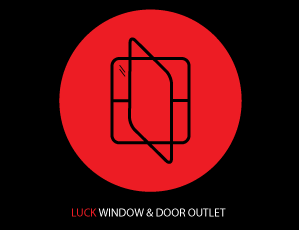810 Hwy 35 Luck, WI 54853 Showroom: 715-472-8500 Mobile: 651-747-6575
Products and solutions for every opening in your home or business
When the high electric bills during the summer months have your head spinning faster than the electric meter itself, or the gas bills during the winter months just keep getting bigger, it is time to take action and replace your old windows and doors.
New windows and doors can be a great investment for your home or business. Approximately 1/3 of a home’s total heat loss occurs through it’s windows and doors. What lets in light and fresh air may also be letting heat escape in the winter, or unnecessarily heating up your home in the summer. Depending on the current condition of your existing windows and doors, the payback period on the initial investment ranges between 3 to 7 years. Once that mark is achieved, it’s money in your pocket.
Let’s first look at how new windows can help your home be more energy efficient. Windows block heat transfer based on three fundamental physical laws:
-
Convection – Windows eliminate or reduce the convection airflow between the interior and exterior, blocking heat from passing through the window along with the airflow. A leaky window, which could be one with cracked glass, broken putty, or one that is poorly insulated around the frame, allows air to escape through these gaps.
-
Conduction – Even a very thin sheet of glass has some insulating properties, but if there are two panes of glass and the space between the panes is an inert gas such as argon, the panes provide extra insulating value, which reduces heat transfer through conduction. Conduction is what causes the metal handles of a pot to heat up when you boil water in the pot; so you can guess that a metal window frame, if not properly built, can conduct a lot of heat.
-
Radiation – Radiation, the third type of heat transfer, usually occurs when light in the infrared spectrum passes through windows, heating the air inside, or when heat inside the room radiates out through the glass. Home energy auditors sometimes take infrared photographs of a home to show where heat losses are most significant, and windows are one of the largest sources of heat escaping from houses in winter.
The best type of window for your home depends on where you live. Energy Star rated windows must meet requirements based on specifics for the U.S.’s four climate regions. When researching new windows look for the National Fenestration Rating Council label on all Energy Star labels to compare important characteristics such as:
-
U-factor, which measures how well a window prevents heat from escaping. The U-factor measures the insulation ability of the entire window, not just the glass. For cold climates, a low U-factor is the most important consideration.
-
Solar heat gain coefficient (SHGC), which measures how much heat from sunlight is transmitted through the window.
Replacing your old windows and doors is also a great help to the environment because you can reduce your consumption of gas and electricity.
The benefits of installing new windows and doors in your home or business are as clear as the new glass itself! Let Luck Window and Door Outlet help you take advantage of all the benefits today.

